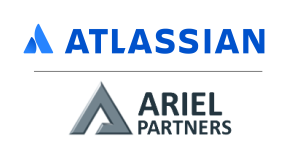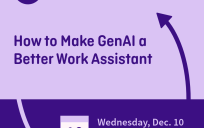An interview with Craeg Strong, Chief Technology Officer, Ariel Partners
It might seem obvious, but the goal of constituent engagement is to get services to the people who need them and to include resident voices on policies that affect them.
“You really want to foster a sense of everyone working together,” explained Craeg Strong, of Ariel Partners, a company that helps agencies get up and running on Atlassian collaboration tools. The Atlassian suite, which includes tools such as Jira Service Management, allows no-code automation that works across applications, including those an organization already has. “Engagement means the community is involved in addressing the issues [along] with government, in making the policies, discussing the different approaches, and looking at the outputs, to see if they are contributing to the [desired] outcomes.”
But often state and local government workers spend too much of their time wrangling incompatible systems, struggling to get data, and meeting reporting requirements. And while they’re doing that, they’re not serving the community.
Automate to Collaborate
One way to lighten the burden is to automate time-consuming, repetitive processes. “Automation is, to me, the very best way,” Strong said. “For example, a lot of those reports are the same every week – week in, week out. If you can get [them] automated, the people involved can do what they’re really there to do.”
Another strategy is to provide platforms where people and processes can work together seamlessly. Ariel Partners, where Strong works, helps agencies get up and running with Atlassian’s suite of collaboration tools.
Getting that right involves understanding how the organization currently operates, what is working
well, and what changes are required to produce the desired outcomes.
Observe and Ask Questions
Strong recalled visiting the intake center at a social services agency to learn about how staff enrolled new clients. “I asked them why they did things in
a certain order, and they said, ‘Well, the machine doesn’t work if you do it in a different order.’”
Bringing in new tools effectively calls for human- centered design. “The Atlassian toolset is very helpful, but it requires people with these skills
to use them,” Strong said. That makes training another essential in bringing new tools on board.
Train — and Keep Training
“It’s better to train people after they have the tool,” he said. “People need to be able to jump into Jira as soon as they finish the training,” to try out what they’ve learned.
Also, don’t provide all the training in one fell swoop, he said. Start with the basics and add later sessions in bite-sized chunks to improve skills.
How Ariel and Atlassian Can Help
“Government stakeholders may not be getting the full value out of the tools that they already have,” he said. “And they may not be leveraging all of
the resources they have access to.” That’s where Ariel can help, providing training, coaching, and
a JumpStart bundle that includes installation, migration, configuration, and training on the Atlassian suite of solutions. Those include Jira, Confluence, Bitbucket, Jira Service Management, and Trello — which facilitate teamwork, task and project management, and content collaboration, and integrate with existing applications to help automate workflows. Together, Ariel and Atlassian bring in new options and help agencies get the best out of what they already have.
This article first appeared in “Your Guide to Building Constituent Engagement.” There’s more on how to increase engagement with your community here.






Leave a Reply
You must be logged in to post a comment.